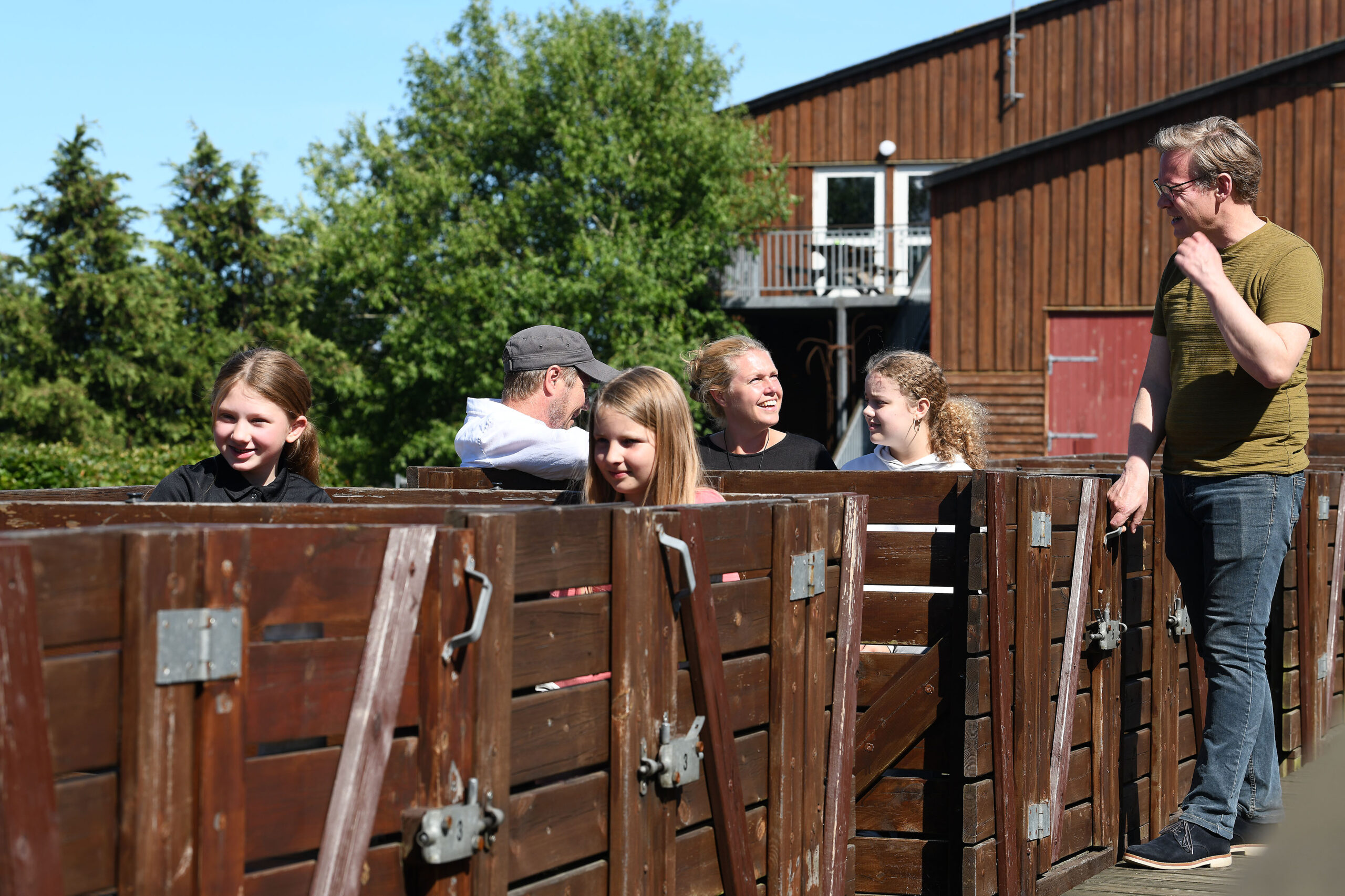We are awaiting the very last permits from the Danish Transport Authority before our lovely trains again can take you out into the countryside.
Imagine the sound of the locomotives chugging slowly through the bog, and the rhythmic clang of the wagons moving over the tracks. The smell of diesel mixed with the distinctive scent of peat and sphagnum filled the air. The visual impression of the long rows of peat, dominating the landscape, was both impressive and somewhat surreal.
Today, it’s not the hard, physical labour that awaits at the end of the track, but rather the chance to see cranes, sea eagles, and the large herds of red deer that inhabit the area. Climb aboard the primitive wooden wagons, pulled by the old narrow-gauge locomotive, and travel two kilometres out into the bog, following in the footsteps of the old peat workers.
Narrow-Gauge Railway: A Lifeline to the Bog
In the heart of the Danish bogs, the narrow-gauge railways wound like lifelines, transporting peat and sphagnum from the excavations to the processing sites. These narrow-gauge railways were not just a means of transport; they were an indispensable part of the peat industry, where small locomotives and wagons performed a crucial task in challenging terrain.
Types of Wagons and Locomotives
The narrow-gauge railways were operated by small but robust locomotives, often powered by diesel or petrol. These locomotives were specially designed to run on the narrow tracks and handle the difficult conditions of the bog. The types of wagons varied, but the most common were open tipping wagons, which could be tipped to the side to facilitate unloading of peat and sphagnum. The wagons were constructed of steel and wood, and their design made them ideal for handling the large quantities of material that needed to be transported.
Speed and Efficiency
Although these narrow-gauge railways did not run fast, they were incredibly efficient. The locomotives rarely ran faster than 10-15 km/h, but their stability and ability to pull heavy loads over long distances made them invaluable. The slow speed was also a necessity in the soft and often unstable bog area, where faster travel could lead to accidents and damage to the track.
Drama and Challenges
Working with the narrow-gauge railways was not without drama. It was not uncommon for the trains to encounter problems in the difficult terrain. Did locomotives and wagons sink into the bog? Yes, it happened. The wet and unstable bog ground could suddenly give way, and heavy loads could cause wagons to sink into the soft substrate. Rescuing a sunken locomotive or wagon required both time and effort and could be a dramatic experience for the workers.
Additionally, there was a constant risk of fires. Sparks from the locomotive engines could ignite the dry peat or sphagnum, leading to dangerous situations. The fire hazard required workers to always be vigilant and ready to extinguish flames before they spread.
An Important Part of History
The narrow-gauge railways in the Danish bogs are an important part of our industrial heritage. They represent a time when human ingenuity and hard work made it possible to exploit nature’s resources despite challenging conditions. These railways and the people who worked on them have helped shape both the landscape and the community.
Visit us to learn more about the fascinating history of the narrow-gauge railways and experience how these small trains played a big role in the peat and sphagnum industry.

